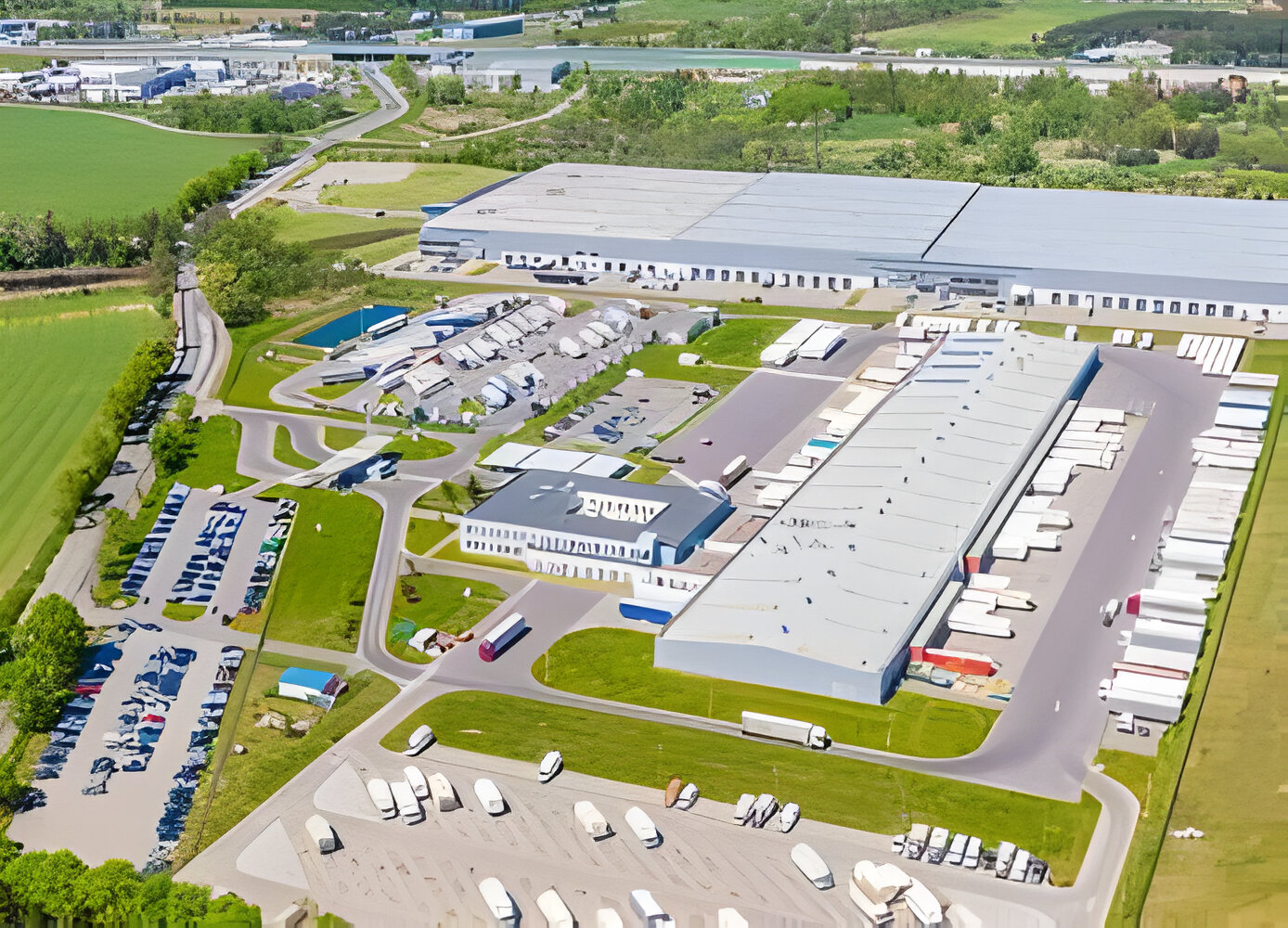Introduction | Grade A Warehousing
Welcome to our exploration of Grade A Warehousing! In this blog, we will delve into the what, why, and how of Grade A Warehousing, aiming to provide you with a comprehensive understanding of this crucial aspect of the supply chain industry. Whether you’re a logistics professional looking to enhance your knowledge or a curious individual seeking insights into the world of warehousing, join us as we unravel the intricacies of Grade A Warehousing and its significance in today’s market.
What is Grade A Warehousing?
Grade A Warehousing represents the pinnacle of storage facilities, adhering to the most rigorous industry benchmarks for quality and safety. These state-of-the-art facilities boast cutting-edge technology and infrastructure, guaranteeing the seamless handling and storage of goods. The ‘Grade A’ classification symbolizes superior standards in cleanliness, security, accessibility, and the general state of the warehouse. Many businesses choose Grade A Warehousing to protect their products and optimize their supply chain processes.
The Benefits of Grade A Warehousing
Grade A warehousing offers top-notch facilities designed to store goods and products, maintaining ideal conditions for preservation and security. By leveraging Grade A warehousing, businesses can streamline their supply chain management, resulting in enhanced efficiency and cost savings. Moreover, the prestige linked to Grade A warehousing can bolster a company’s brand image and reputation. Additionally, the advanced technology and contemporary infrastructure available in Grade A warehouses empower businesses to stay competitive in the market and address the ever-changing needs of consumers.
Key Features of Grade A Warehousing
Grade A warehouses boast state-of-the-art security systems, ensuring the utmost safety and protection for stored goods. With advanced climate control technology, these facilities maintain optimal conditions to preserve the quality of sensitive products. Additionally, efficient loading and unloading facilities within Grade A warehouses contribute to streamlined logistics operations. Furthermore, the inclusion of spacious and well-designed storage areas in Grade A warehousing allows for the accommodation of various types of goods, further enhancing the overall efficiency and functionality of these top-tier facilities
Implementing Grade A Warehousing: Best Practices
Understanding the specific requirements of Grade A warehousing is vital for successful implementation, ensuring that the highest standards are consistently met. Investing in state-of-the-art technology and equipment can significantly enhance the efficiency of Grade A warehousing operations, contributing to seamless storage and handling of goods. Furthermore, maintaining a clean and organized environment is crucial for upholding the esteemed standards of Grade A warehousing, safeguarding the quality and integrity of stored products. Additionally, regular training and upskilling of warehouse staff are essential to ensure strict adherence to Grade A warehousing best practices, fostering a culture of continuous improvement and excellence in operations.
Grade A Warehousing: How It Improves Supply Chain Efficiency
Grade A warehousing facilities are at the forefront of technology, utilizing state-of-the-art systems to streamline inventory management and enhance operational efficiency. Their strategic positioning minimizes transportation expenses and accelerates delivery times, contributing to cost savings and improved customer satisfaction. These top-tier warehouses uphold rigorous quality standards, guaranteeing that goods remain in prime conditions, protecting their integrity. Through process optimization and effective space utilization, Grade A warehousing plays a pivotal role in boosting overall supply chain efficiency and performance.
The Importance of Quality Control in Grade A Warehousing
Quality control serves as a crucial component within Grade A warehousing, guaranteeing that products adhere to the utmost standards prior to their market release. This process plays a pivotal role in identifying and addressing any defects or issues present in the products, effectively preventing potential customer dissatisfaction. Moreover, the implementation of rigorous quality control measures can elevate the reputation of a warehouse as a dependable source for high-quality products. By upholding stringent quality control protocols, Grade A warehousing facilities can significantly reduce the likelihood of recalls and returns, ultimately leading to substantial time and cost savings.
How to Implement Grade A Warehousing
When implementing Grade A warehousing, it is vital to optimize the layout for efficient storage and retrieval of goods. This involves careful planning to maximize space utilization and streamline logistical operations. Additionally, maintaining strict quality control measures is crucial to ensure that all products meet the highest standards of quality and integrity. Investing in advanced technology and automation can greatly enhance Grade A warehousing operations, improving overall efficiency and accuracy. Moreover, regular training and upskilling of warehouse staff is essential for successful Grade A warehousing implementation, fostering a culture of continuous improvement and excellence in operations.
Exploring the Benefits of Grade A Warehousing
Grade A warehousing is equipped with cutting-edge technology and top-notch security systems, ensuring state-of-the-art facilities for businesses. The prime locations of these warehouses are strategically positioned, enabling efficient distribution and cost savings in transportation. Moreover, the high-quality infrastructure of Grade A warehouses creates a safe and secure environment for storing valuable inventory, contributing to the preservation of product integrity. By investing in Grade A warehousing, companies can elevate their brand reputation by guaranteeing top-notch storage conditions for their products, reflecting a commitment to excellence and quality.
Understanding the What, Why, and How of Grade A Warehousing
Grade A warehousing represents the pinnacle of quality and safety standards within the industry, ensuring top-notch storage conditions for diverse goods. By investing in Grade A warehousing, businesses can significantly bolster the efficiency and dependability of their supply chain operations. These premier facilities are meticulously designed to uphold rigorous standards, leveraging advanced technology and strict adherence to best practices to deliver superior performance and reliability.
Strategies for Improving Warehouse Grades
Implementing a robust inventory management system is essential to streamline operations and minimize errors within the warehouse. Investing in advanced technology such as RFID and automation can greatly enhance efficiency and accuracy, contributing to improved overall warehouse performance. Optimizing layout and storage space utilization is crucial in maximizing the capacity of the warehouse, enabling seamless storage and retrieval of goods. Additionally, regularly training and incentivizing staff to maintain high standards of cleanliness and organization plays a pivotal role in upholding the esteemed standards of Grade A warehousing.
Key Factors in Achieving Grade A Warehouse Standards
When it comes to implementing Grade A+ warehousing, it’s essential to introduce rigorous quality control measures to guarantee that every product meets the required standards. Additionally, optimizing the storage layout and organization is crucial for maximizing space and efficiency within the warehouse. Leveraging advanced technology for inventory management and tracking can significantly enhance the overall operational efficiency. Furthermore, maintaining strict cleanliness and safety protocols is paramount in upholding hygiene standards and preventing accidents, ensuring a safe and secure environment for all warehouse activities.
Frequently Asked Questions
What is Grade A warehousing and its significance?
Grade A warehousing encompasses top-tier storage facilities that uphold the highest industry standards, boasting state-of-the-art infrastructure, advanced technology, and impeccable security measures. These strategically located facilities in prime logistics hubs offer easy access to major transportation networks, facilitating efficient distribution of goods and products. The significance of Grade A= warehousing is evident in its capacity to elevate supply chain efficiency, reduce operational costs, and guarantee the safety and quality of stored inventory. By leveraging Grade A+ warehousing, businesses can streamline their inventory management processes and gain a competitive advantage in the market by enhancing speed-to-market capabilities.
Why should businesses consider Grade A warehousing?
Grade A+ warehousing offers cutting-edge facilities dedicated to safeguarding valuable inventory, underscoring a commitment to upholding high-quality storage and distribution standards. By opting for Grade A+ warehousing, businesses can capitalize on efficient logistics operations and streamlined processes, ultimately enhancing overall productivity. The state-of-the-art technology and infrastructure of Grade A warehouses play a pivotal role in optimizing inventory management, reinforcing the reliability of these top-tier facilities.
How does Grade A warehousing differ from standard warehousing?
Understanding the stark differences between Grade A+ warehousing and standard warehousing is vital for businesses looking to optimize their storage and logistics operations. Grade A +warehousing sets itself apart by offering top-tier facilities equipped with advanced security systems and climate control, ensuring the preservation of product integrity. Moreover, the integration of state-of-the-art technology for inventory management and tracking in Grade A warehouses enhances operational efficiency, a far cry from the reliance on manual processes often found in standard warehousing facilities. This distinction underscores the importance of investing in Grade A+ warehousing to elevate the overall quality and reliability of storage solutions.
What are the key features of Grade A warehousing facilities?
Grade A +warehousing facilities go above and beyond in ensuring the safety and security of valuable inventory with their state-of-the-art security systems. Additionally, these top-notch facilities boast ample storage space and efficient material handling equipment, allowing for streamlined operations and logistical efficiency. Furthermore, their advanced climate control systems contribute to preserving the quality of stored goods, while convenient transportation access enhances seamless logistics and distribution within Grade A warehouses.
How can businesses identify and select Grade A warehousing for their operations?
When seeking Grade A + warehousing facilities, it’s crucial to prioritize modern infrastructure furnished with cutting-edge technology to optimize operational efficiency and inventory management. Additionally, evaluating the proximity of the location to major transportation hubs and highways is key for seamless logistics and distribution. Furthermore, conducting comprehensive assessments of the facility’s adherence to industry standards, including safety protocols, environmental regulations, and quality certifications, is essential to ensure reliability. Lastly, thorough inspections of the infrastructure, encompassing the building’s structure, security systems, and potential for future expansion, are vital steps in making an informed decision.
Conclusion
In conclusion, Grade A +warehousing sets the highest bar in terms of quality, safety, and efficiency within the industry. From top-notch technology and security systems to prime locations that facilitate cost-effective distribution, these facilities offer unparalleled benefits for businesses. By prioritizing rigorous quality control measures, advanced technology, strategic layout optimization, and continuous staff training, companies can successfully implement and maintain Grade A + warehousing standards. This not only elevates their supply chain operations but also enhances their brand reputation, reflecting a commitment to excellence and quality. With a focus on continuous improvement and adherence to best practices, Grade A+ warehousing paves the way for superior performance, reliability, and success in the storage and distribution of goods.
SEBI | Plot in Rishikesh | start investing




